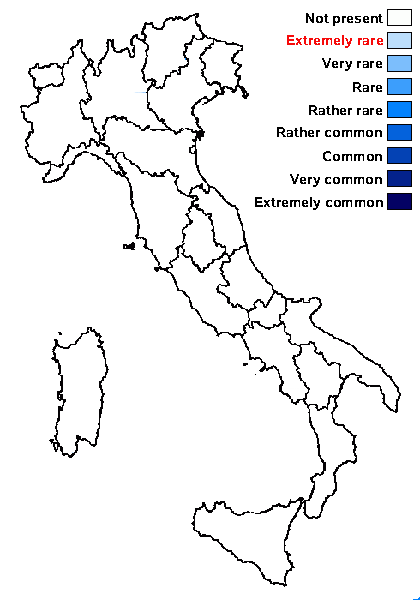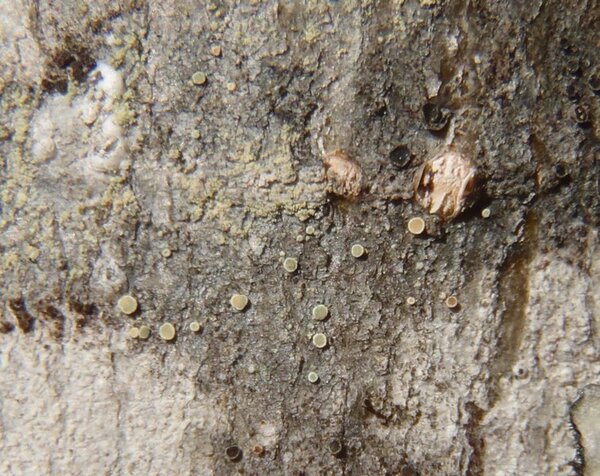Lecanora laxa (Śliwa & Wetmore) Printzen
Bryologist, 104, 3: 395, 2001. Basionym: Lecanora varia subsp. laxa Śliwa & Wetmore - Bryologist, 103, 3: 486, 2000
Synonyms:
Distribution:
Description: Thallus crustose, yellowish beige, usually endosubstratic, rarely consisting of a few slightly convex areoles, ecorticate. Apothecia lecanorine, 0.3-0.6(-0.9) mm across, sparse to densely crowded, sessile and strongly constricted at base, with a beige to ochre or olivaceous, concave or rarely flat, whitish-pruinose disc and a thick, strongly prominent, flexuose, persistent thalline margin. Thalline exciple corticate, 40-120 µm thick laterally, 65-160 µm thick at base, the medullary hyphae with 1.5-2 µm thick lumina; cortex 5-20 µm thick laterally, 20-50 µm thick near the base; epithecium ochre-brown, 5-15(-20) µm high, with fine crystals soluble in K, N-; hymenium colourless to pale brown in upper part, 40-70 µm high; paraphyses simple or weakly branched, up to 1.5 µm thick at mid-level, the apical cells up to 2.5 µm wide; hypothecium colourless to yellowish, 30-60 µm high. Asci 8-spored, clavate, very thin-walled, with a K/I+ blue, tall tholus penetrated by a faintly amyloid apical cushion, the wall K/I-, surrounded by a blue outer layer, Lecanora-type. Ascospores 1-celled, hyaline, broadly ellipsoid, 7-11(-12) x (3.5-)4-7(-7.5) µm. Photobiont chlorococcoid. Spot tests: thallus K-, C-, KC- or KC+ faintly yellow, P-. Chemistry: isousnic and usnic acids, different terpenoids, including zeorin. Note: a species described from California and also found on the mountains of Spain (Martínez & Aragón 2004), mainly growing on acid bark and lignum, especially of conifers, frequently confused with L. varia; to be looked for in Italy. For further details see also Printzen (2001).
Growth form: Crustose
Substrata: bark and lignum
Photobiont: green algae other than Trentepohlia
Reproductive strategy: mainly sexual

Predictive model
Growth form: Crustose
Substrata: bark and lignum
Photobiont: green algae other than Trentepohlia
Reproductive strategy: mainly sexual

Predictive model
 INDEX FUNGORUM
INDEX FUNGORUM
 GBIF
GBIF




